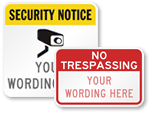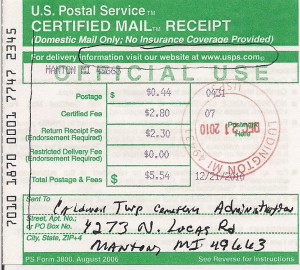How to write an effective No Trespassing letter
If simply posting “No Trespassing” signs has done little to stop someone from illegally trespassing on your property—stealing your rhubarb or using your lake to fish, for instance—sending a “No Trespassing” letter is the next course of action. A No Trespassing letter, sometimes called a “Letter of No Trespass” or “Notice of No Trespass,” is useful in a number of ways. It can threaten legal action, which is often enough to avoid actually having to take any costly legal measures, and if the situation does escalate, you’ll have proof that you officially notified the culprit of his or her illegal activity. Plus, there’s always the possibility that the violators did not know they were trespassing. A strongly-worded letter is sure to put an end to that.

Sending a No Trespassing letter lets trespassers know you are serous about prosecuting. From Paul Sableman.
Before you begin drafting a letter, check with your local police department to see if they have an official template you can use. These will usually include the No Trespassing statute that your target is violating. If no template is available, find your state’s statute and use this as the basis for the content of your letter.
In addition to clearly stating that the letter recipient is not allowed on your property, your No Trespassing letter should contain:
- The date the letter is effective, the offender’s name and the address of the premises that are off limits.
- A description of what is meant by “trespassing” and the actions the letter recipient must take to avoid penalties. (This information is usually contained in the official state statute). You may also wish to include a description of the trespasser
- The consequences of further infractions. In most cases, those consequences will include notifying the police and pressing charges.
- A dated signature from someone with the appropriate authority. The letter should come from someone with the authority to represent the property such as the owner, business manager or even a security guard.
Always send letters of this kind through certified mail so that you have both a record of sending the letter and of its delivery. In serious cases, you may also consider sending a copy of the letter along with a copy of the certified mail receipt to the police department, including your intention to do so in the letter’s content.
Category: Uncategorized


















